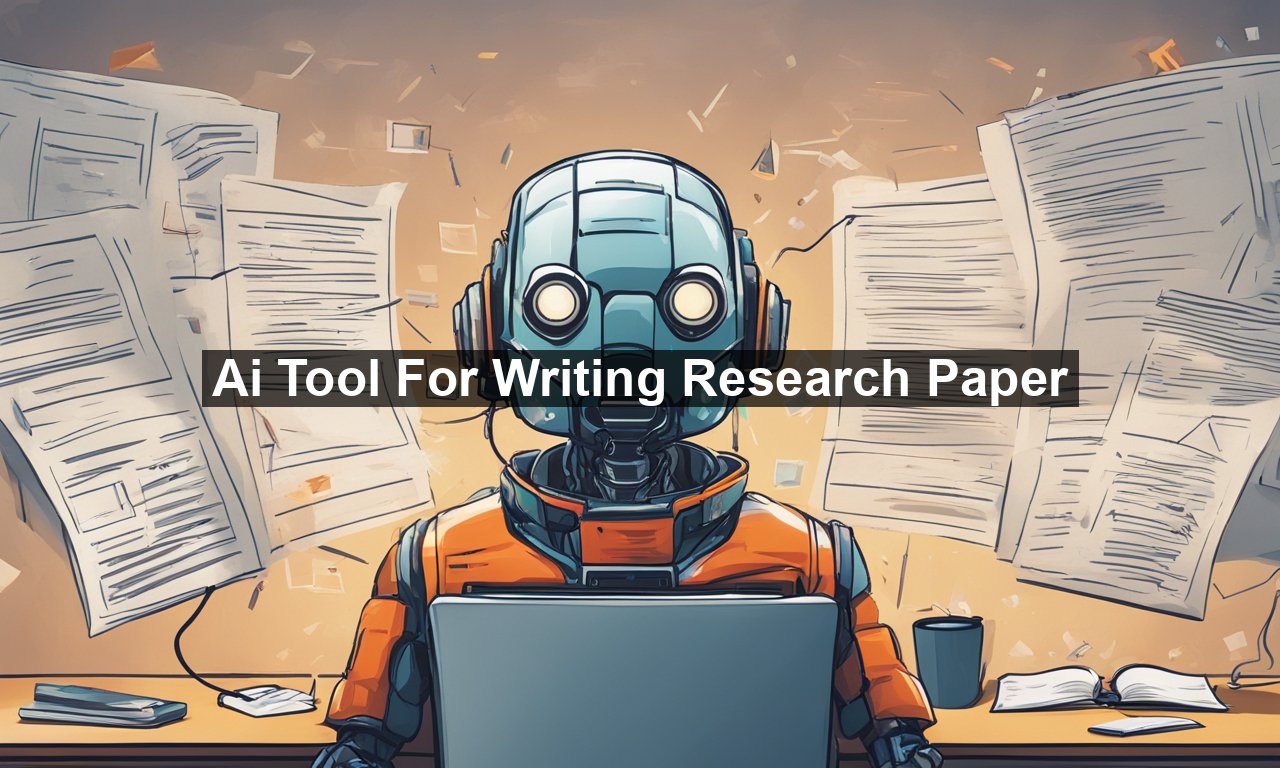Imagine sitting at your desk, staring at a blank screen, and struggling to piece together the perfect research paper. Sounds familiar, right? Now, envision having an AI tool that streamlines your writing process, boosts your productivity, and ensures that your paper stands out in scholarly circles. Intrigued? You should be. In this blog post, we’re going to explore how AI tools can revolutionize your research paper writing, making it faster, more efficient, and perhaps even enjoyable.
What Are AI Tools for Writing?
Artificial Intelligence (AI) tools for writing are software applications designed to assist in content creation. These tools not only help in generating text but also optimize it for clarity, coherence, and quality. They leverage advanced technologies such as natural language processing (NLP) and machine learning to understand context, provide suggestions, and even simulate human-like writing.
Key Features of AI Writing Tools
- Grammar and Spell Check: These tools automatically correct grammatical errors and spelling mistakes, ensuring your paper is polished.
- Plagiarism Detection: AI tools can cross-check your content against vast databases to ensure originality.
- Content Optimization: Advanced AI can suggest improvements in sentence structure, tone, and flow.
- Research Assistance: Some AI tools can even help you gather relevant sources and citations.
What Are the Benefits?
Harnessing AI for writing research papers comes with myriad benefits. Let’s delve into some of the most compelling advantages:
Efficiency and Speed
One of the most significant upsides is the dramatic improvement in efficiency. AI tools can automate many mundane tasks such as proofreading and formatting. This means you can spend more time focusing on your research and less time on labor-intensive tasks.
Enhanced Quality
AI can help elevate the quality of your paper by providing suggestions for improving readability and coherence. Additionally, features like plagiarism detection ensure your work is original, which is crucial in academic writing.
Access to a Wealth of Resources
Some AI tools come equipped with the ability to search through vast databases for relevant articles, journals, and studies. This ensures that your research is comprehensive and well-supported. For instance, JSTOR is an excellent resource for finding credible academic sources, which can seamlessly integrate with AI research tools.
How Does It Work?
Using an AI tool for writing a research paper is straightforward. Here’s a step-by-step guide on how to get started:
Step 1: Choose the Right Tool
There are numerous AI writing tools available, each with its unique features. Some popular choices include Grammarly, for grammar checking, and Turnitin, for plagiarism detection.
Step 2: Input Your Content
Once you’ve selected a tool, input your draft or start writing directly in the application. The AI will begin analyzing your text in real-time, offering suggestions and corrections.
Step 3: Review and Revise
Make use of the AI’s feedback to revise and improve your paper. You’ll likely find that these tools can catch errors and suggest improvements you might have missed.
Step 4: Finalize Your Paper
After making all necessary revisions, use the tool for a final round of checks. Once you’re satisfied with the quality, format your paper as required by your academic institution’s guidelines.
Are There Any Drawbacks?
While the benefits are substantial, it’s essential to be aware of the potential downsides:
Over-Reliance
Relying too heavily on AI tools can make one complacent. It’s crucial to cultivate your writing skills and use AI as a supplement, not a crutch.
Cost
Many advanced AI writing tools come with subscription fees. Ensure you weigh the benefits against the costs to determine if it’s a worthwhile investment for you.
Lack of Human Touch
Despite their effectiveness, AI tools cannot replicate the nuance and creativity of human writing. Always add a personal touch to ensure your paper doesn’t read as robotic.
Conclusion
AI tools for writing research papers are transforming how we approach academic writing. They offer remarkable benefits such as enhanced efficiency, improved quality, and access to expansive resources. However, they should be used as a complementary tool, not a replacement for the foundational skills of critical thinking and coherent writing.
Embrace the future of academic writing by integrating AI tools into your research process. You might find that not only does your productivity increase, but so does the quality of your work.











